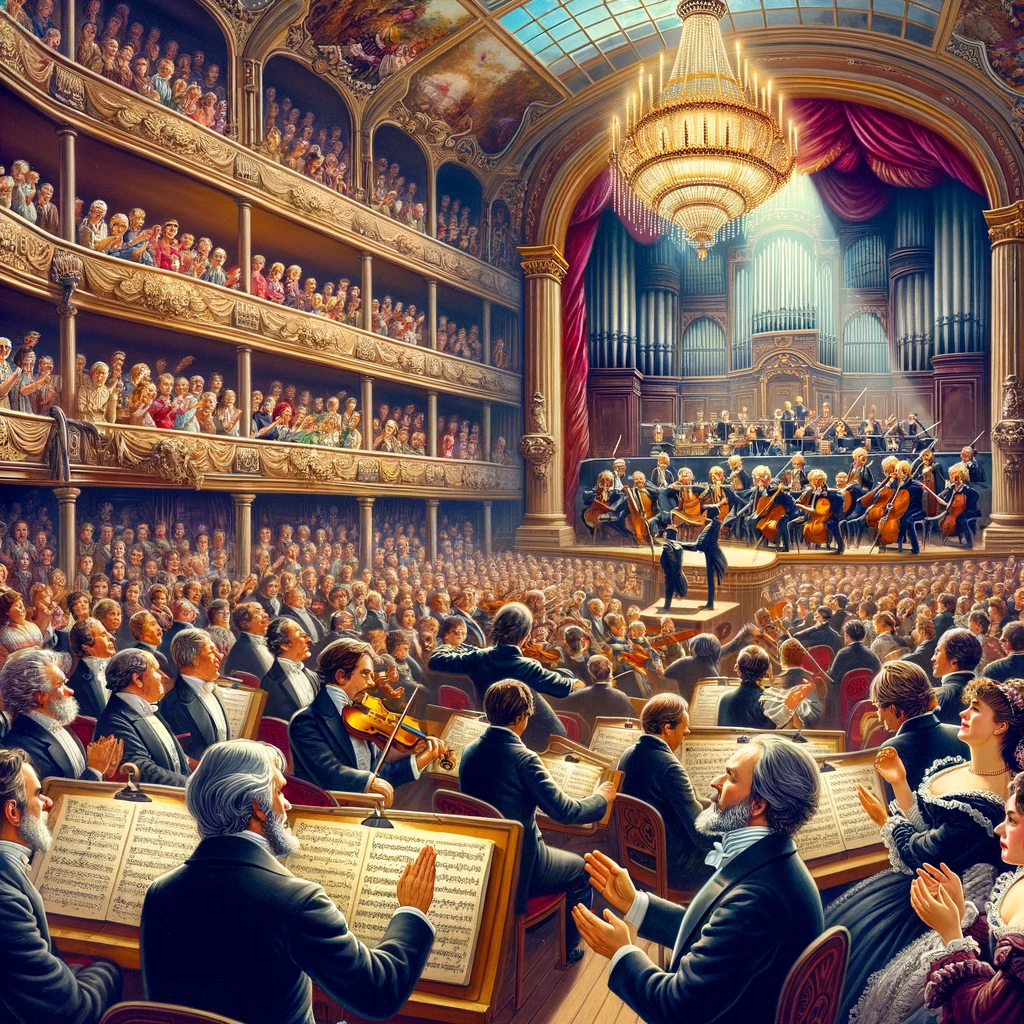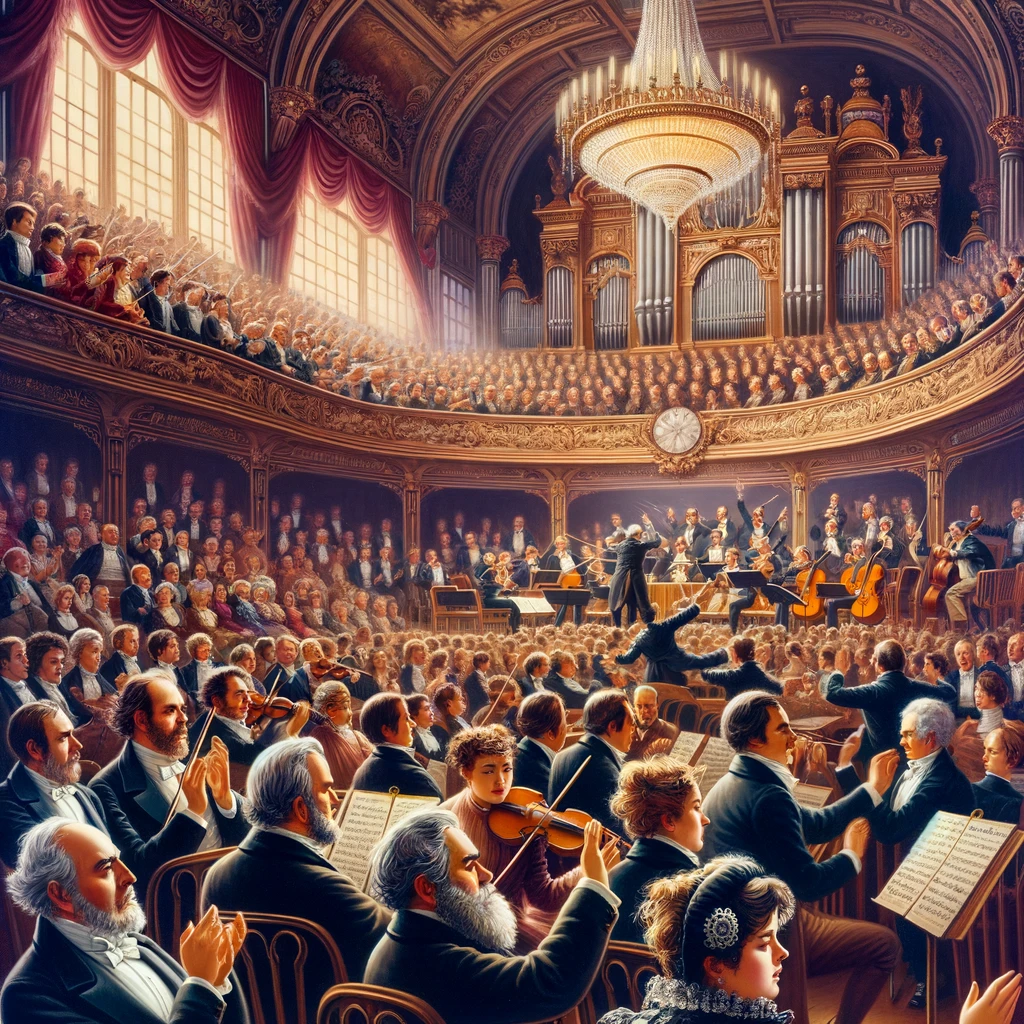
Beethoven’s Music: Reception in His Era
Ludwig van Beethoven, a name synonymous with classical music genius, has long been revered as one of the most influential composers in the history of Western music. His work spans the transition from the Classical period to the Romantic era, marking a significant evolution in musical expression. While Beethoven’s compositions are widely celebrated today, the reception of his music during his lifetime presents a complex tapestry of admiration, confusion, and at times, criticism. This article delves into the historical context and public opinion of Beethoven’s music during his era, offering insights into the challenges and triumphs he faced.
Early Acclaim and the Shadow of Giants
Beethoven’s musical career began in the shadow of great composers like Mozart and Haydn. His early works, which adhered more closely to the Classical traditions of his predecessors, were well-received by the public and critics alike. These compositions showcased a mastery of form and a fine understanding of the orchestral language of the time. The “Pathétique” Sonata, for instance, was a hit among Vienna’s music lovers, who praised it for its emotional depth and innovative use of form.
However, as Beethoven began to infuse his works with greater complexity and emotional range, the reception became more mixed. The shift in his compositional style was partly due to his worsening hearing loss, which some historians believe led him to explore music as a more personal, introspective medium.
The Middle Period: Innovation Meets Controversy
During what is often referred to as his “Middle Period,” Beethoven composed some of his most famous works, including the “Eroica” Symphony and the “Fifth Symphony.” These compositions broke new ground with their structural innovations, dramatic themes, and longer durations. The “Eroica,” for instance, was initially met with mixed reviews because of its unprecedented scale and complexity. Some listeners were enthralled by its boldness and depth, while others were overwhelmed and confused.
The “Fifth Symphony,” with its iconic four-note motif, was a significant success and gradually came to be seen as a symbol of triumph over adversity. Yet, the immediate reception was not uniformly positive. The radical departure from traditional symphonic form and the intense, sometimes chaotic energy of the music divided audiences and critics.
Late Masterpieces and Misunderstood Genius
Beethoven’s late compositions, including the “Late String Quartets” and the “Ninth Symphony,” pushed the boundaries of musical expression even further. These works, characterized by their structural complexity and profound expressiveness, were ahead of their time. The “Late String Quartets,” composed during the last years of his life, were particularly puzzling to contemporaries, who found them inaccessible and overly complex.
The premiere of the “Ninth Symphony” serves as a poignant example of the dichotomy in Beethoven’s reception. While the symphony is now celebrated as one of his greatest achievements and a monumental piece of music history, its initial performance was met with mixed reactions. The innovative inclusion of a choral finale, based on Schiller’s “Ode to Joy,” was revolutionary. Although the immediate public reaction was enthusiastic, the critical reception was less favorable, with some critics deeming it confusing and lacking in aesthetic unity.
Personal Struggles and Public Persona
Beethoven’s personal struggles, particularly his hearing loss, profoundly affected his life and how his music was perceived. His increasing deafness isolated him from society and made public performances a challenge. This isolation led to a portrayal of Beethoven as a tortured genius, struggling against fate. His personal hardships, however, did not diminish his popularity in Vienna; on the contrary, they augmented the mythic perception of his persona.
Despite these challenges, Beethoven’s reputation continued to grow, and by the end of his life, he was recognized as one of the greatest composers of his time. The transformative power of his music resonated with audiences and influenced generations of composers.
The reception of Beethoven’s music during his lifetime illustrates the evolving nature of musical appreciation and the challenges faced by innovative artists. Beethoven’s journey from a classical composer to a pivotal figure of the Romantic era was marked by both critical acclaim and misunderstanding. His ability to transcend the musical norms of his time and explore new expressive possibilities not only shaped the future of music but also redefined the audience’s expectations and experiences.
Through the fluctuations in his music’s reception, Beethoven’s legacy endures, a testament to the enduring power of artistic innovation and the complex relationship between a creator and his contemporaries.

Beethoven’s Influence on Peers and Future Generations
Beyond the immediate public and critical reception, Beethoven’s influence on his contemporaries and future generations of composers was profound and far-reaching. His bold redefinition of the symphony and other forms encouraged other musicians to explore new ideas and expand the expressive capacity of their music. Composers such as Schubert, Mendelssohn, and later Brahms, drew inspiration from Beethoven’s innovations in structure and harmonic complexity.
During his later years, Beethoven’s standing among younger composers was akin to that of a revered elder statesman in music. They saw in his compositions a new musical language that was both challenging and inspiring. His direct influence is evident in the way these composers approached symphonic writing and thematic development. For instance, Schubert’s symphonies and string quartets contain echoes of Beethoven’s expansive and dramatic style.
Changing Perceptions Over Time
The perception of Beethoven’s music underwent a significant transformation in the decades following his death. As the 19th century progressed, the Romantic movement gained full swing, and listeners began to appreciate his music in new ways. The qualities that once confounded early audiences—dramatic intensity, complexity, and emotional depth—became celebrated as the embodiment of Romantic ideals. Beethoven was posthumously elevated from a respected composer to an iconic figure representing artistic heroism.
This change was partly fueled by the growing interest in the artist as an individual, a trend that placed greater value on personal expression and the overcoming of obstacles through art. Beethoven’s life story, marked by his struggle with deafness and his uncompromising dedication to his art, fit perfectly into this narrative. His music was reinterpreted through the lens of his biography, making the emotional and structural complexities of his works emblematic of his personal triumphs.
Educational Impact and Legacy
Beethoven also left a lasting mark on music education. His works became central to musical training, not only for their artistic value but also for their technical innovations. Music conservatories across Europe and, later, America, incorporated his compositions into their curricula. This educational focus helped perpetuate Beethoven’s influence, ensuring that each new generation of musicians grappled with his ideas and found fresh interpretations and appreciation for his music.
Today, Beethoven’s symphonies and sonatas are staples of concert repertoires around the world, continually performed, recorded, and studied. His ability to convey profound human emotions through music remains compelling to audiences and performers alike. His works challenge performers to delve deep into both technical mastery and expressive interpretation, a testament to his enduring relevance in the classical music landscape.
The Modern View on Beethoven’s Music
In contemporary times, Beethoven’s music continues to resonate, bridging the gap between classical enthusiasts and general audiences. His life and works are frequently the subject of documentaries, books, and lectures, highlighting both his musical genius and his human vulnerabilities. The enduring fascination with Beethoven speaks to a universal aspect of his music that transcends time and cultural barriers.
Moreover, modern performances and recordings of Beethoven’s works often attempt to recreate the soundscapes of his time, using period instruments and historically informed performance practices. This approach has opened up new dimensions in the understanding of his music, showing how it might have sounded to audiences of his own era.
Conclusion
The journey of Beethoven’s music from its initial reception to its current exalted status illustrates the transformative power of art over time. While Beethoven faced a mixed reception during his lifetime, his legacy has grown to define the essence of classical music. His work continues to inspire, challenge, and move people around the world, reaffirming the timeless nature of his musical genius. Beethoven’s life and works remind us that great art often emerges from the struggle, resonating across generations with those who seek depth and meaning in music.